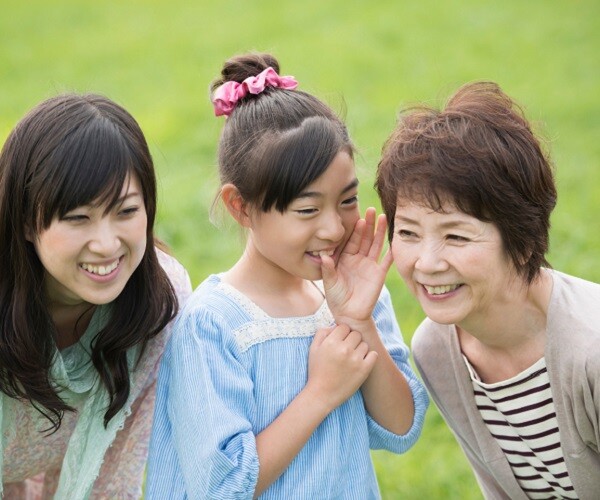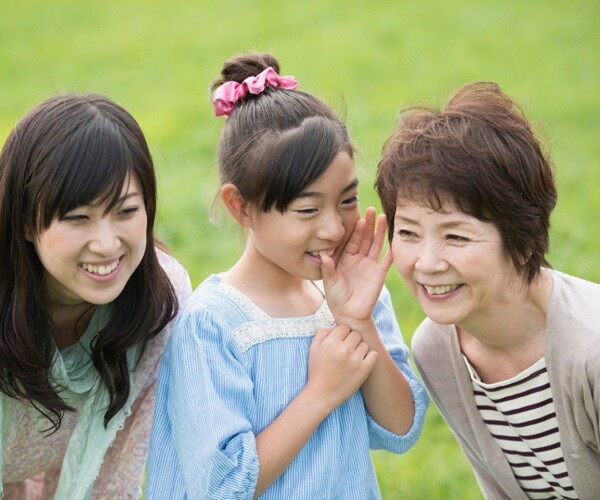Children can feel confused and unsure how to respond when faced with questions that require them to choose between family members. Children often have complex and diverse emotions towards each family member, and being asked to choose can make them uncomfortable.

Illustration.
Questions about choices can create pressure for children, making them feel the need to “please” adults or express emotions in a way that others want. This pressure can lead to guilt.
Therefore, asking children to choose between family members can have complex effects on their psychology and emotions. Parents and adults need to be careful when asking such questions, helping children develop their emotions naturally and without pressure. To better understand this issue, psychologist Quang Thi Mong Chi offers advice and helps children behave appropriately when faced with such situations.

Psychologist Quang Thi Mong Chi.

Many people think that this question is insensitive and sows the seeds of dishonesty in children’s minds. What do experts think about this?
This seemingly harmless question can actually have unintended psychological effects if not asked appropriately. Young children, especially during kindergarten and elementary school, are in the process of developing their thinking about emotions and fairness.
When adults put children in a situation where they have to compare their love for family members – such as between grandparents – children can feel confused, stressed, or afraid of disappointing someone.
This creates a pressure to choose that children do not need and should not have to bear. Also, when faced with this question, children tend to answer in a “safe” way – saying what they think adults want to hear – instead of expressing their true feelings.
Over time, this can form a pattern of emotional dishonesty, leading children to adjust their thoughts and emotions to please others, rather than developing the ability to be honest and confident in self-expression.
Instead of asking such comparative questions, adults should use open-ended questions to encourage children to share their emotions naturally and positively, for example: “What do you like to do with your grandmother the most?” “What does your grandmother usually do that makes you laugh?” or “How do you feel when both grandmothers love you?” These questions not only help children develop their ability to recognize and express emotions but also strengthen multidimensional and healthy family relationships. In conclusion, subtlety in communication with children plays a crucial role.
This seemingly small question reflects how adults create an emotional environment for children. Always prioritize making children feel safe, loved, and not judged in every interaction.

When children are faced with situations like “Who do you love more, grandma or grandpa?”, “Who do you love more, mom or dad?”, “Do you love grandpa or grandma more?”, how should parents guide them to respond and behave appropriately?
This is a very common situation, and it is important for parents to accompany and help children handle it gently, without causing harm while still developing their socio-emotional skills.
Parents should teach children how to protect their emotional boundaries skillfully. For example, children can be guided to respond in a neutral, positive, and affirmative way, such as: “I love everyone differently, but equally special,” “I love both my grandmothers because they both love me” or “I feel happy to have both parents love me, so I love them both.”
Such responses help children avoid being forced to divide their love and, at the same time, encourage them to use refined language to express their emotions and respect others. More importantly, parents should create a space for conversation after such situations to help children understand that:
– No one has the right to force them to choose whom to love more or less
– Love is not a competition but an emotional connection between family members.
– Each family member has a unique role and deserves equal respect.
In addition, parents can role-play with their children and practice appropriate responses in similar situations, so children feel more confident and secure when facing sensitive social situations.
In conclusion, instead of worrying about how children will answer, parents should view this as an opportunity to teach them about the value of fairness in emotions, refined social skills, and the ability to protect their personal emotions. These skills will accompany them throughout their lives.

How do these types of choice questions affect the way children perceive family relationships in the future? If so, how is this usually reflected?
This seemingly simple question can actually have subtle but profound effects on children’s perceptions and how they build relationships in the future. When children are frequently put in a situation where they have to “choose sides” between loved ones, they will gradually develop a divisive mindset, even a competitive one, in family relationships – which is very different from the mindset of connection, sharing, and harmony that a healthy family should have.
Some manifestations that may appear in children later on include the belief that emotions need to be measured and compared, difficulty expressing true emotions, feelings of guilt or fear of hurting others, and the formation of an emotional competition pattern within the family. Specifically:
Belief that emotions need to be measured and compared: Children may think that love is limited and must be divided, rather than understanding that each relationship has its own unique value.
Difficulty expressing true emotions: If children have been judged or received negative reactions when answering “incorrectly”, they will learn to suppress or adjust their emotions to please others.
This can affect their ability to build intimate and honest relationships later on.
Easily feeling guilty or afraid of hurting others: When growing up in an environment where emotions are compared and judged, children may feel anxious or guilty when making choices in relationships – such as between parents, friends, or between personal needs and family expectations.
Formation of an “emotional competition” pattern in the family: Children may become adults who always feel the need to be loved more or paid more attention to – instead of feeling secure in unconditional love. It is important to note that these influences do not necessarily happen immediately but can develop silently over time if children do not receive support and guidance from adults.
Therefore, the role of parents and adults in creating a healthy emotional environment is crucial. Instead of letting children get caught up in invisible comparisons, adults should continuously affirm that love is not about division but about feeling, connecting, and nurturing. When children feel safe and not judged in expressing their emotions, they will develop a positive, fair, and healthy mindset in relationships – not only within the family but also in their future lives.

If parents want to understand their children’s attention and emotions towards family members (grandparents, parents, siblings…) instead of asking them to choose, what subtle ways can they use?
When parents want to better understand their children’s emotions and attachment to family members such as grandparents, parents, siblings, instead of asking comparative questions like “Who do you love more?”, it is important to create a subtle, non-pressuring communication environment for children to naturally express their emotions.
An effective way is to use open-ended, non-comparative questions, such as: “What do you like to do with your grandmother the most?”, “What does your grandfather usually do that makes you happy?”, “What does mom cook that makes you feel loved?”, or “When do you feel that your sister is special to you?”. These questions help children recall positive experiences with each family member, allowing them to express their emotions clearly and specifically, without having to choose or divide their love.
In addition to words, parents can elicit children’s emotions through activities such as drawing, storytelling, or making a family photo album. For example, invite children to draw each family member and ask: “Who is Grandpa drawing here? Why did you choose this moment?” – this allows children to express their emotions through images and imagination, a very suitable form for their age.
Also, revisiting a family outing, looking at photos together, and reminiscing about loving moments will help children recall beautiful memories and strengthen their bond with family members.
Parents should also share their own emotions honestly and positively, such as: “When I was little, I loved sitting on my grandmother’s lap and listening to her stories, it felt so warm” – this not only sets a good example for children but also creates a sense of safety for them to open up.
Equally important, parents need to observe children’s behavior and body language subtly: who they turn to for comfort, whose name they mention when telling stories, who they like to play with in their free time… These expressions are often more truthful than words and can reflect a deeper level of attachment.
In conclusion, instead of seeking the answer to “whom do you love the most”, parents should encourage children to share their emotions and memories with each family member uniquely. This will not only help children express their true emotions but also foster strong, positive connections within the family. Children will learn that love is not about comparison but about feeling and appreciating each unique relationship.





































